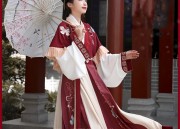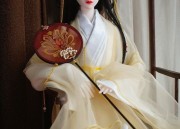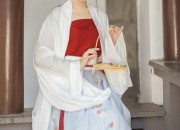The Splendor of Ming-Style Hair Accessories in Hanfu Fashion
In the realm of traditional Chinese culture, Hanfu fashion represents a distinctive and vibrant aspect of national attire. Among the various elements that constitute Hanfu, the intricate hair Accessories hold a special significance, particularly the ones that belong to the Ming period. This article delves into the rich history and exquisite craftsmanship of Ming-style hair accessories in Hanfu fashion.

The Ming dynasty (1368-1644 CE), a pivotal era in Chinese history, witnessed a remarkable evolution in fashion and artistry. This era's influence on hair accessories was profound, reflecting in the intricate designs, diverse materials, and innovative techniques employed. The hairstyles and accessories of the Ming dynasty were not only a reflection of societal norms and status symbols but also a showcase for artistic expression.
The hair accessories of Hanfu fashion during the Ming period were predominantly made of precious materials like jade, gold, silver, and other gemstones. These accessories were often intricately carved or engraved with patterns and designs that reflected the cultural and artistic influences of the time. The use of these materials not only added to the beauty of the hair accessory but also ensured its durability and longevity.
One of the most distinctive features of Ming-style hair accessories was their intricate design patterns. These patterns often featured floral motifs, geometric shapes, and traditional Chinese symbols like dragons and phoenixes. These designs were not only visually appealing but also symbolically significant, representing good luck, prosperity, and other auspicious themes.
Another noteworthy aspect of Ming-style hair accessories was their varied shapes and styles. From simple pins and combs to elaborate hair ornaments and headpieces, each accessory had a distinct shape that was both functional and decorative. These shapes were often influenced by the trends of the time and the preferences of the wearer.
The craftsmanship employed in creating Ming-style hair accessories was also remarkable. The use of various techniques like carving, engraving, filigree work, and embroidery added to the beauty and uniqueness of each accessory. These techniques were passed down through generations, ensuring that the traditional values and aesthetics were preserved in each piece.
The influence of Ming-style hair accessories on modern Hanfu fashion is also significant. Many modern designers often incorporate elements of Ming-style hair accessories into their designs, ensuring that the traditional values and beauty are carried forward into modern times. These modern designs not only pay homage to the traditional but also add a contemporary touch to Hanfu fashion.
In conclusion, the Ming-style hair accessories in Hanfu fashion represent a rich history and exquisite craftsmanship. These accessories not only add to the beauty of the wearer but also serve as a medium to showcase traditional Chinese culture and values. The influence of these accessories on modern Hanfu fashion is also significant, ensuring that the legacy is carried forward into modern times. As we delve into the world of Hanfu fashion, we must not overlook the importance of these beautiful and intricate hair accessories that add a unique charm to this traditional attire.
The study and appreciation of Ming-style hair accessories in Hanfu fashion not only offer us a glimpse into the rich history and culture of China but also provide us with a window to understand and appreciate traditional craftsmanship and artistry. As we move forward in time, it is important to preserve and revive these traditional elements, ensuring that they continue to inspire and influence future generations.






